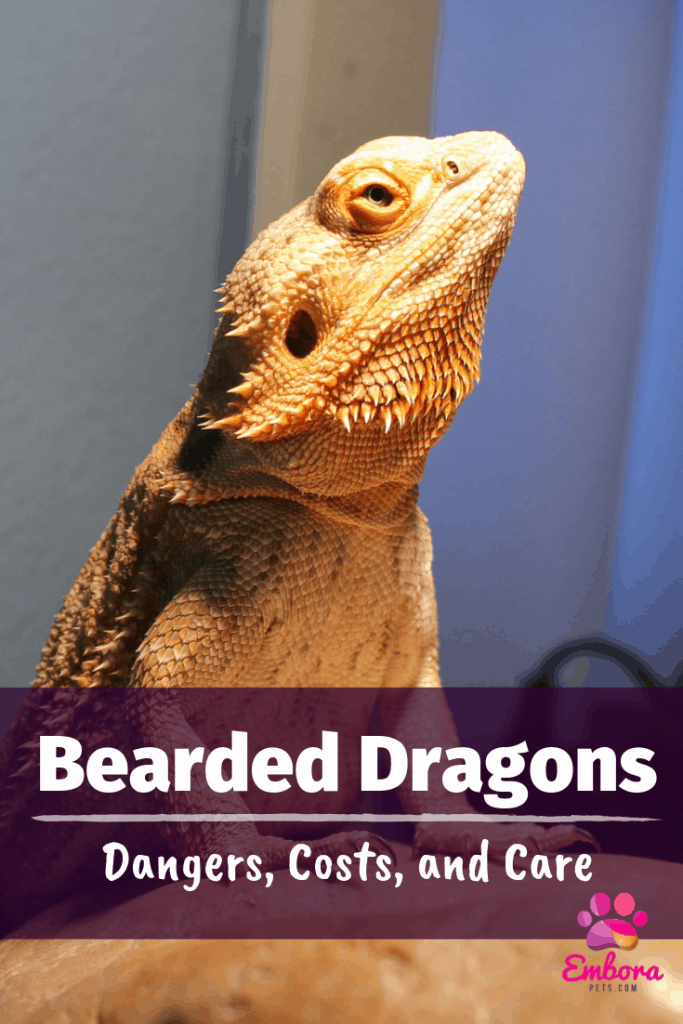Bearded Dragons as Pets: Dangers, Cost to Buy One, and Ease of Care
Bearded dragons are friendly lizards that are popular as pets, but a lot of first-time reptile owners wonder what it is like owning one of these little guys.
What are bearded dragons like as pets? Bearded dragons or “beardies” are arguably the most common household lizard. They are docile and easy to take care of, so they make great pets, especially for the first-time reptile owner. Although easy-going, bearded dragons have complex nutritional needs that need to be addressed.
Bearded dragons enjoy the coveted position of most popular lizard in America, but that doesn’t mean owning one is a breeze. While it is true that they make great pets for first-time reptile owners, they have special dietary needs that need to be met if you want them to thrive.
Bearded Dragons as Pets
Bearded Lizard Overview
| Life span | 6 – 15 years |
| Size | 16 – 24 inches |
| Diet | Crickets, other insects, vegetables |
| Housing | Minimum tank size: 55 – 75 gallons Requires UV light and warm temperatures Include rocks and logs for basking and hiding |
| Health Care | Prone to digestive impaction from crunchy bugs susceptible to metabolic bone disease and respiratory infection |
Editor’s Note: This article was reviewed, edited and updated for accuracy by Veterinarian, Dr. Sara Ochoa!
Bearded Lizard Temperament
Bearded lizards are really the puppies of the reptile world. So-called for their spiny throats that puff up to look like a rugged Viking beard, bearded lizards are docile, easy-going, and downright friendly.
A lot of people are looking to break their way into the world of reptiles and the bearded lizard is a great place to start. What is it about the bearded lizard that people find so appealing? After all, wouldn’t most people prefer a dog or a more traditional pet?
Maybe for some people, but the bearded dragon is for those with a true sense of adventure and a love for the exotic.
Bearded dragons hail from the distant land down under. As with all Australian natives, the bearded dragon is tough as nails and able to take care of itself. As Australia is fiercely protective about the exportation of local fauna, almost all American Bearded dragons were bred from captive stock.
But those daring Australian roots still shine brightly in all bearded dragons. Unlike a lot of other reptiles, beardies always seem to be on the move. Whether daringly climbing up a rock or log, or feasting on a cricket, beardies are always happiest when moving.
Don’t expect to passively watch your bearded dragon as he explores his world. Beardies are known for their curiosity and wide observant eyes. A lot of owners say they feel as if their lizard is watching and admiring them just as they admire the beauty of their lizard.
But what is it like to really own one of these beautiful animals? How much does one cost? Are there any dangers in owning one? Are they easy to take care of?
We will take a look at each of these questions so you can know exactly what it’s like to own a bearded dragon.
Let’s get down to business and talk about the price of these little guys to kick off our discussion.
Bearded Dragons: How Much Do They Cost?
Let’s get down to the brass tax and talk about some important business. A crucial thing for a pet owner to know before they select an animal to care for is how much it is going to cost. After all, it won’t do anyone any good to purchase a lizard that you can’t afford to take care of.
Talking about price will help you choose your ideal pet for the best price possible.
So, how much are bearded dragons and how much does it cost to take care of one? Well, the short answer is “it depends” and the long answer is going to take a bit more time to explain.
The cost of a bearded dragon depends mainly on 3 things:
- Color
- Morph
- Age
Let’s look how each of these could effect the price of a bearded dragon.
Color
Color seems to be the most self-explanatory part of the cost. The brighter the hue and the rarer the color, the more expensive the beardy.
Here is a list of all possible colors:
- Red
- Orange
- Yellow/Citrus
- Brown/Tan
- White/Silver
- Purple/Blue
The intensity of the color isn’t the only thing that matters. The more uniform and unbroken the color/pattern is, the more expensive the beardy.
The more saturated a Bearded Dragon’s colors are, the more expensive it will be.
ExoticPetRescourses.com
Age
Age also influences the cost of your beardy. Unlike dogs or cats which are much cheaper as they mature, bearded dragons are more expensive the older they get and less expensive when young.
Why is that?
Mature dragons are done growing and their impressive size and color are on full display. Much cooler than the younger beardies.
Young bearded dragons aren’t as brilliant to look at as their mature counterparts and take a few years of growing to reach their full potential. The biggest reason why babies are cheaper is they eat a lot more than a mature beardy so they are expensive to feed.
Morph
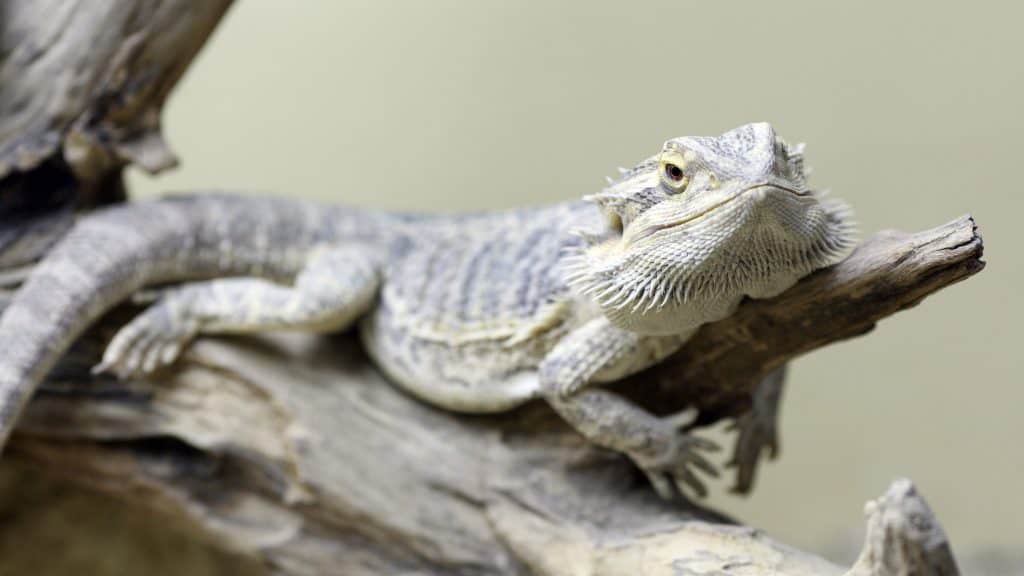
Morph is a term with which a bearded dragon newcomer may not be familiar with. Morphs have very little to do with color and more to do with body type.
However, like color, some morphs are rarer than others and therefore more expensive. Here is a list of all recognized morphs with a brief description:
- Standard. The standard bearded dragon. Its most distinguishing feature is its spike covered back. This morph most closely resembles those native to Australia.
-
Leatherback . A favorite of breeders and enthusiasts, the leatherback has a noticeably clear back which makes colors appear brighter and more vivid. Its only spikes are located on the head. - Translucent. The translucent or “trans” has opaque almost see through skin. Young translucent bearded dragons have blue bellies that appear almost clear. Trans’
have dark black eyes and occasionally they have blue eyelids. - Dunner. Dunners bare the name of their breeder Kevin Dunn. The most distinguishing feature of a Dunner is their scales which grow with no clear pattern or direction over the body.
- Hypomelanistic. Hypomelanistic dragons or “hypos” lack the pigment necessary to produce darker colors. Thus, their scales are always of softer pastel color and their nails are often clear.
- Silk back. A rare breed so called for its complete lack of scales. Colors appear brilliantly and uninterrupted on this beautiful morph, but it suffers from poor health if not handled correctly.
- Paradox. The paradox dragon is distinguished by its unique scale pattern. Often appearing a solid blue color with patches of orange and red scales breaking out of the blue sea in a seemingly random fashion.
- German Giant. German Giants appear almost exactly like the standard morph only twice as big. It is hard to distinguish them in their youth, but they grow to enormous sizes.
- Witblits. Patternless dragons that appear in muted pastel colors. They appear almost white and glowing.
- Zero.
So called due to their complete lack of color or pattern. They are completely white and are a favorite among breeders.
Cost
Here is a table that shows how much a specific morph and color will usually cost. Assume that we are working with mature bearded dragons (18 months or older). If a color is not available for a specific morph it will be labeled N/A.
| Standard | Leatherback | Translucent | Dunner | Hypomelanistic | Silkback | Paradox | German Giant | Witblits | Zero | |
| Red | $125 – $150 | $60 – $100 | $250 – $300 | $175 – $200 | $275 – $300 | $150 – $175 | $300 – $350 | $200 – $250 | $400 – $450 | N/A |
| Orange | $30 – $65 | $50 – $100 | $250 – $300 | $175 – $200 | $225 – $275 | $125 – $150 | $300 – $350 | $200 – $250 | $400 – $450 | N/A |
| Yellow/Citrus | $30 – $65 | $60 – $100 | $250 – $300 | $175 – $200 | $275 – $300 | $125 – $150 | $300 – $350 | $200 – $250 | $400 – $450 | N/A |
| Brown/Tan | $ 30 – $65 | $50 – $100 | $250 – $300 | $175 – $200 | $225 – $275 | $125 – $150 | $300 – $350 | $200 – $250 | $400 – $450 | N/A |
| White/Silver | $80 – $120 | $200 -$300 | $450 – $600 | N/A | $400 – $500 | $200 – $250 | $500 + | N/A | $500 + | $1000 + |
| Blue/Purple | $150 – $200 | $200 – $300 | $450 – $600 | N/A | $400 – $500 | $180 – $200 | $500 + | N/A | $500 + | N/A |
Where Can I Buy a Specific Morph?
Some morphs are hard to find, but if you have a sharp eye and an ear to
There are three big venues for locating bearded dragons:
- Pet Stores
- Breeders, and
- Online
Each vendor has it’s pros and cons. Let’s go ahead and take a quick look at each.
Buying From a Pet Store
Pros
- Cheap
- Convenient
- Able to inspect the animal before you buy
Cons
- Lack of variety
Pet stores are the easiest way to get a bearded lizard, and probably the best way for the beardy initiate. Pet stores are convenient and reliable.
The best part about a pet store is you get to see what you buy before you make the purchase. Something you can’t do online.
The pet store is also the best place to go if you are looking to save some money. Pet store bearded lizards will never cost over $100. Realistically, you are bound to find them listed for around $60.
The only problem is a lack of variety. You aren’t likely to see rare zero morphs at your local Petsmart.
Buying From a Breeder
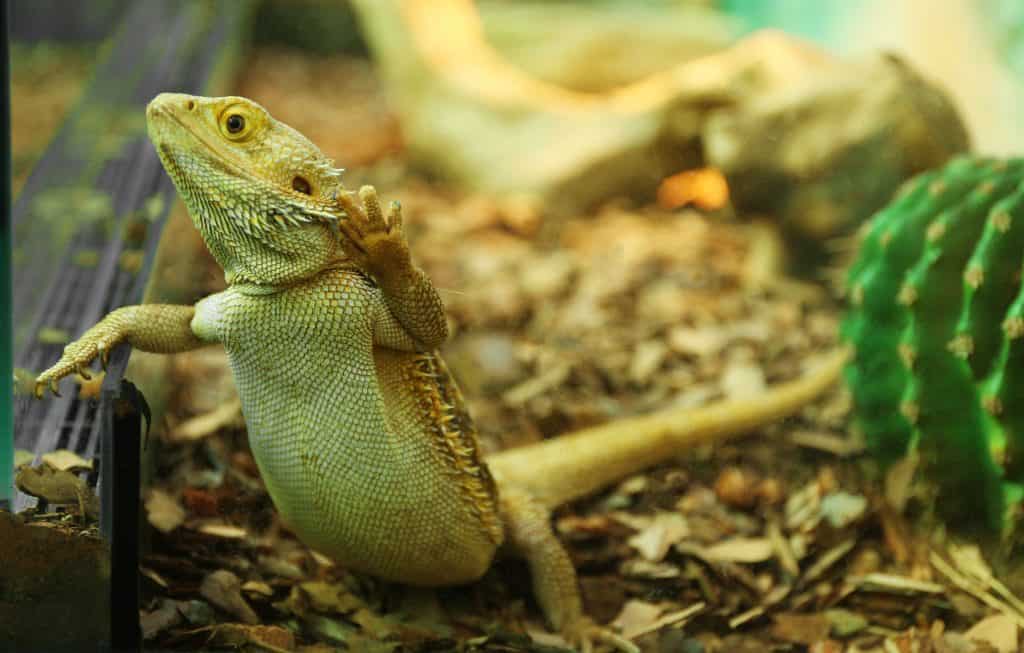
Pros
- Highest quality bearded dragons
- Great variety (or even custom ordering)
- Expert know how
Cons
- Really expensive
This is the safest option, but also the most expensive. Legitimate breeders are bearded lizard pros that know all of the ins and outs of morphs, how to care for reptiles, as well as anything else that you would need to know about bearded dragons.
Beardies that are bred by professional breeders will look awesome and will be healthy.
However, quality breeders come at a cost. If you are buying a rare lizard from a breeder expect to fork over as much as $2,000 on one animal. It might only be worth it if you are a real enthusiast.
Buying Online
Pros
- Convenient
- A world of variety
- Price comparison between lizards
Cons
- Semi-shady product
Buying online may be the easiest way to buy out there. You can peruse a world of bearded dragons from the safety of your own home. Unlike a traditional pet store, you can find anything you want on the internet and get it shipped directly to your front door.
Want a blood-red dunner? You can find that. How about a citrus hypo? You can find that too.
You never know what you get when you buy online, so make sure the website you are on is credible. Check for user reviews for the seller whenever possible before you buy.
Here are a few credible websites that you may want to use to start shopping:
Beware, online shoppers! There are a lot of scammers on the internet! Don’t buy any “rare” morphs that seem too good to be true. Scammers will alter images to make their product more appealing.
The Cost of Caring for a Bearded Dragon
Now that we have covered what it costs to purchase a bearded dragon, let’s take a look at the cost of caring for one of these beautiful reptiles.
Bearded dragons are famous for their care-free lackadaisical style, but that doesn’t mean caring for one is any easier than caring for any other pet.
Not only do bearded dragons require some serious TLC, you also need to have the right materials if you want your beardy to be happy.
The Right Materials
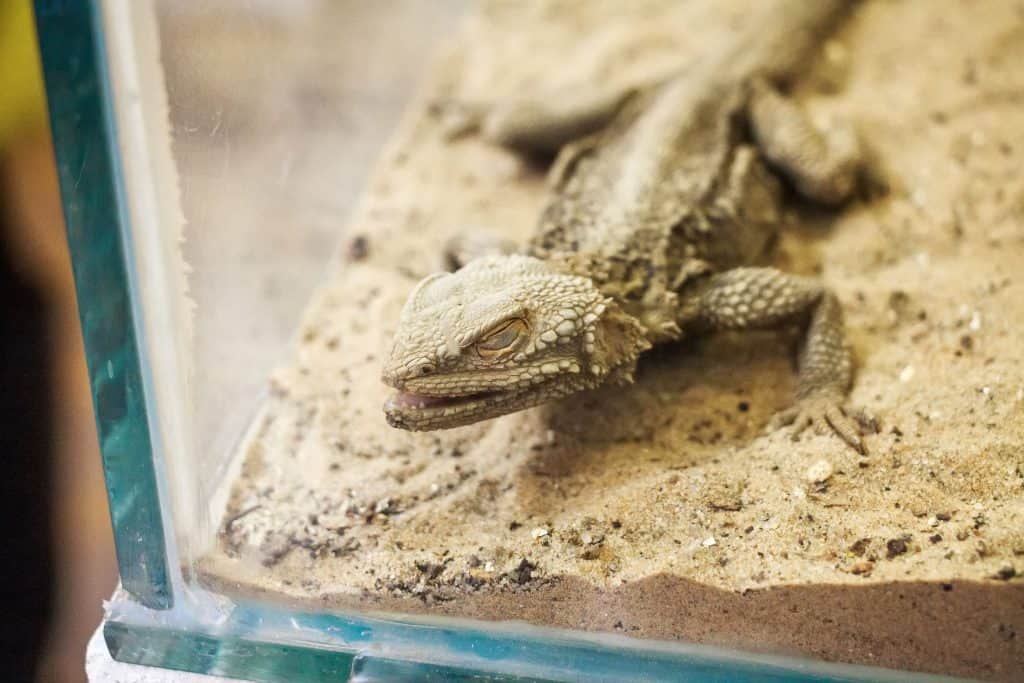
Here is everything that you will need to make sure your beardy lives comfortably:
- A tank (at least 75 gallons, German Giants at least 150 gallons)
- Heat lamp
- Accessories
- Flooring (often called “substrate” in the reptile world)
- Food
Get all this and you will be an expert bearded dragon owner.
Here is a description of each item, how much it should cost, and some recommendations of what to buy.
Tank
Everyone needs a home and your beardy is no exception. Reptiles live in large tanks or enclosures and should not be placed in cages. The tank you buy is your bearded dragon’s world and no expense should be spared if you want your little guy to be happy and healthy.
Tanks generally cost anywhere between $200 – $350
My recommendation:
- Exo Terra Allglass Terrarium. Large, water proof (if you have owned a reptile before you know how frustrating a leaking tank can be), and easy to clean. In my opinion, there is no better tank out there.
Heat Lamp
As cold-blooded animals, bearded lizards need to maintain a body temperature of at least 85 degrees Fahrenheit in order to move. A heat lamp is one area where you don’t want to cut costs.
You will want one side of the cage to have a heat lamp and reach a temperature of 90 degrees with the cooler side around 85 degrees. The light bulb that you have needs to emit both UVA and UVB.
You need to change this light every 6 months even if the light is still working. Reptiles need UVB light. In the wild, they get this spectrum of light from the sun.
Heat lamps cost anywhere between $20 – $30
As far as lights go I would recommend this light bulb to proved UVB.
Additional recommendations:
- Fluker’s Sun Dome Reptile Lamp. Specifically designed for a reptile enclosure, the best part about this lamp is its ability to handle the special bulbs that reptile lamps need to warm their benefactors. This baby will save you a fortune on light bulbs.
Thermometer
Place a thermometer at the bottom of the cage where your bearded dragon spends most of its time to check the temperature of the cage. You need to place one on each side of the cage.
This is the thermometer I would recommend: [Check Amazon]
Accessories
No home is complete without furniture! Give your bearded dragon a proper house warming present and put a couple of rocks and logs for him to climb around on. Your beardy will feel more comfortable with a few places to hide and you will have a much better experience watching him climb around and explore.
Vet Suggested: Make sure that any accessory that you add to their cage does not have sharp points or rough edges as these can cause many problems with your bearded dragon.
Accessories could cost anywhere from $5 – $35 depending on what you buy.
My recommendations:
- Bent Log Hide-Away. This is a huge log that your beardy will love to climb around on. Plus it’s a log home fit for a king. This piece is for the only truly sophisticated beardies.
- Mojave Hideaway. A big hollow rock with a beautiful red desert aesthetic. Great for that old west vibe.
Substrate
The substrate is the foundation of your beardy’s world. A good substrate is
Sand or any other loose material may be ingested and seriously hurt your bearded dragon. Stick to any compact, firm material.
Substrate costs anywhere from $10 – $20
My recommendation:
- This is the go-to substrate for all bearded dragons. I double-checked with my vet, Dr. Sara before suggesting it.
Food
Even a bearded dragon has needs to eat the right food. This will make all the difference to your dragon’s health . You can buy lie insects at your local pet food store to feed your dragon. Live insects are a pretty cool thing to feed your bearded dragon. Nothing beats watching your dragon stalk and catch its own food. Food will cost you anywhere from $10 – $20 a week.
Two popular insects fed to bearded dragons are crickets or supper worms. These are easy to buy at a pet store or online. Other insects that some eat are Dubia roaches or horn worms
A good source of cricket is an absolute must. Do not get crickets that you would use for fishing as these may have parasites that can make your bearded dragon sick. When you buy crickets in bulk you can set up a small cage for them to live until feeding time. You will need food to feed your cricket too. Make sure to add some veggies to your cricket cage to keep them alive.
You will need to dust these crickets with calcium before feeding. Low calcium can cause major bone problems in bearded dragons. Dusting your crickets with calcium can help increase your bearded dragon’s calcium intake.
Not only do bearded dragons need crickets they also need vegetables. A good vegetable to feed your bearded dragon is green leaf lettuce or collard greens. The darker the greens the better. Never feed your bearded dragon iceberg lettuce as this has no nutritional value.
My Bearded Dragon Food Recommendations:
Bearded Dragons: Are They Dangerous?
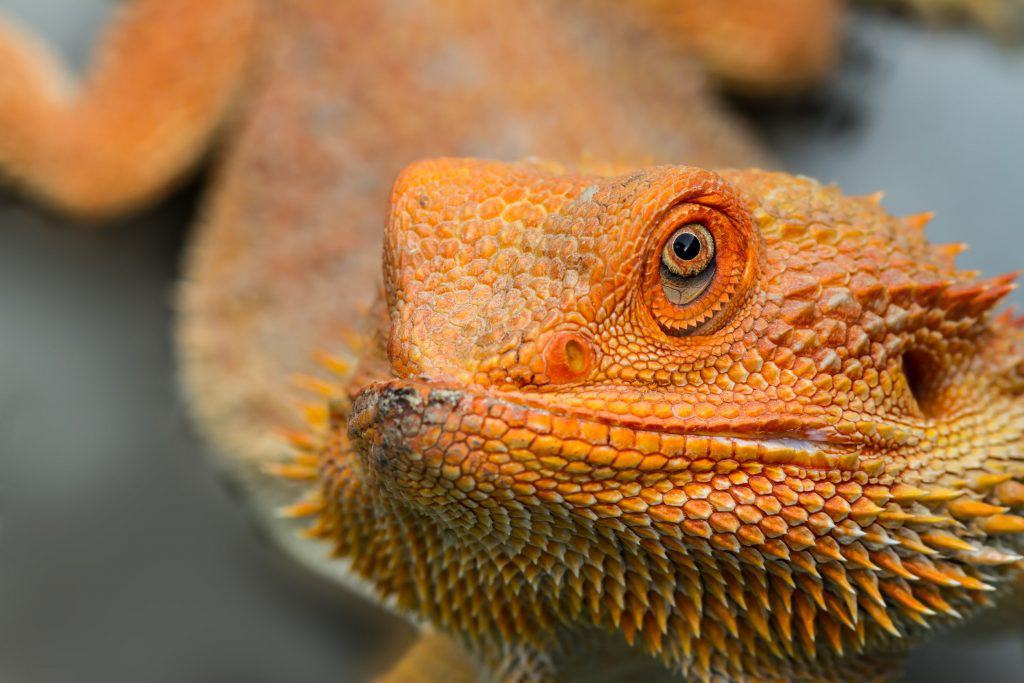
A friend of mine swore that bearded dragons had a venomous bite.
“I swear man!” he would say, “They may seem friendly, but a bit from one of those little guys is deadly!“
My friend may have been over-exaggerating a bit, but he does bring up an interesting question. Are bearded dragons at all dangerous?
A Bearded Dragon’s Bite: Should You be Scared?
Bearded dragons are fierce hunters back in their native Australia. He feeds on insects, small reptiles, and even the occasional rodent. Bearded dragons were once thought to be non-venomous until a study back in 2005 revealed that beardies release a toxin similar to rattlesnake venom whenever they bite down on a victim.
So, should you be scared?
While this mild venom may be deadly to the small victims of the bearded dragon, humans have little to fear from their bite. A bite from one of these little guys would feel a little worse than a bee sting.
It causes swift swelling and profuse bleeding but no serious or long-lasting side effects.
If you are bitten by a bearded dragon, wash the affected area with soap and water. The swelling should go down in a few days.
Other Dangers Associated with the Bearded Dragon
Like all reptiles, the bearded dragon is a carrier of salmonella. Salmonella is a bacteria that causes serious- potentially fatal- intestinal illness.
Be careful when handling your bearded dragon. Make sure you scrub your hands with soap and water after touching your bearded dragon.
Avoid placing your bearded dragon near your face or touching your face while handling.
Handling Tips
Here are a few quick tips to help you handle your bearded dragon safely:
- Be gentle. Bearded dragons are not cuddly puppies and don’t tolerate much abuse for they bite. Warn children before handling. Watch the color of the beard. If it turns black, your lizard is irritated and ready to bite.
- Watch for their spiky backs. The bumps and scales of a beardy’s back can cut and irritate skin. Make sure you handle it gently.
- Keep the nails trim. Bearded dragons may not breathe fire but they have some sharp claws. If you want to avoid being scratched up by their nails, give them a good clipping once every few weeks.
Pro Tip! Wear a long sleeve shirt and gloves if you want to avoid being cut and scratched.
Bearded Dragons: Are They Easy to Take Care of?
Reptiles are not like us. They think and behave differently than any pet mammal that you may have had in the past.
A lot of first time reptile owners fret because of this. “Taking care of a dog is hard enough, but at least they are mammals” they say to themselves. “How much harder will it be taking care of a reptile?”
The answer may surprise you.
Taking Care of a Bearded Dragon: What You Need to Know
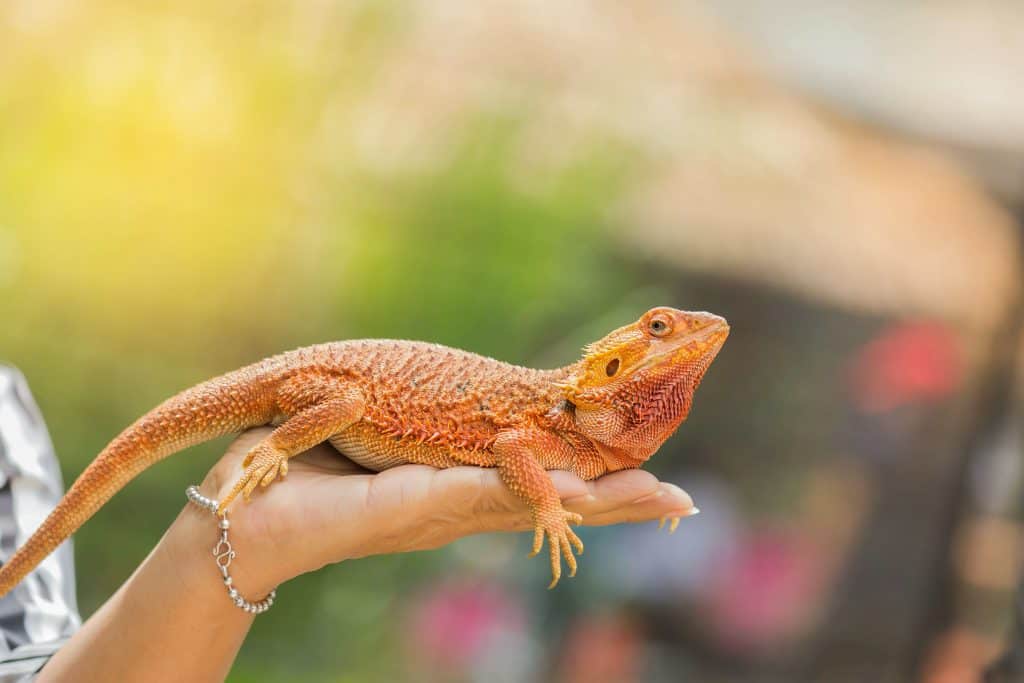
Bearded dragons are famous for their ease of care and minimalist needs. Most reptile are relatively easy to care for, but bearded dragons are the kings of simplicity.
There are three easy steps to taking care of your pet beardy:
- Setting up a home
- Maintaining the home, and
- Maintaining your beardy
Let’s take a look on how to complete each step.
Setting Up a Home
Bearded lizards don’t need a lot, but they do need a good home. Earlier in the article we discussed all of the materials that you will need to set up your bearded dragon’s perfect dream home, here we will discuss how to assemble it.
The process is very simple:
- Put the Reptile carpet in the cage. You may have to cut this to fit the bottom of the cage.
- After you have the carpet all settled, add accessories like…
- Set up your heating lamp. Heating is the trickiest part of a beardy’s home. Your tank should have 2 different temperature zones. A warm basking zone, and a cooler zone. The basking zone should be anywhere from 100 to 110 degrees Fahrenheit and the cooler zone should be about 75 degrees Fahrenheit. Make sure you turn the basking lamp off at night.
- Once your heating is set up, your beardy is ready to be introduced. Let him loose and enjoy!
Maintaining the Home
If setting up your bearded lizard’s enclosure was easy, maintaining it should be even easier.
Cleaning Schedule
There are 2 types of cleaning: Daily Cleaning and Weekly Cleaning
Daily cleaning is the small things you check on every day while weekly cleaning is a more in-depth cleaning of the entire tank.
Let’s take a look at daily cleaning first.
Daily Cleaning Check List
Here is what you need to check for during daily cleaning:
- Have all feces and urates been cleaned?
- Is there any leftover food that needs to be disposed of?
- Are there any spills or stains that should be cleaned?
- Is there any evidence of parasites?
Once you have answered all of these questions you are done for the day.
Congratulations, you just finished daily cleaning.
Weekly Cleaning
Weekly cleaning is simple as well, if not a bit more time consuming.
Start with the accessories. Boil all accessories in water for 30 minutes to rid them of all infection.
Scrub the tank thoroughly with soap and water.
Clean out all feces and replace the substrate if needed.
Maintaining Your Beardy

Beardies don’t ask for a lot so here is what you will need to do everyday to make sure that your scaley friend is doing alright.
- First thing in the morning, feed your dragon.
- Throughout the day make sure your dragon alternates between his basking and cooling zones.
- Check to see if feces and urates are normal.
- Feed your dragon once more around supper time.
Bearded dragons are self-sufficient and don’t need help cleaning themselves.
Bearded dragons are super easy to care for and pet owners find them a joy to have around.
The most important part of caring for your beardy is to keep a close watch on him. If you notice any behavior that is out of the ordinary, you may want to take him to a licensed vet.
Related Questions
What do bearded dragons eat? The diet of a bearded dragon consists of mainly of crickets, meal worms, other insects and an assortment of vegetables. Vegetables make up about 25% of a bearded dragon’s diet.
Why do bearded dragons hiss? Bearded dragons hiss when they feel threatened or intimidated. If your bearded dragon is hissing, find out what is stressing him and move it immediately. Bearded dragons have been known to bite when threatened.

